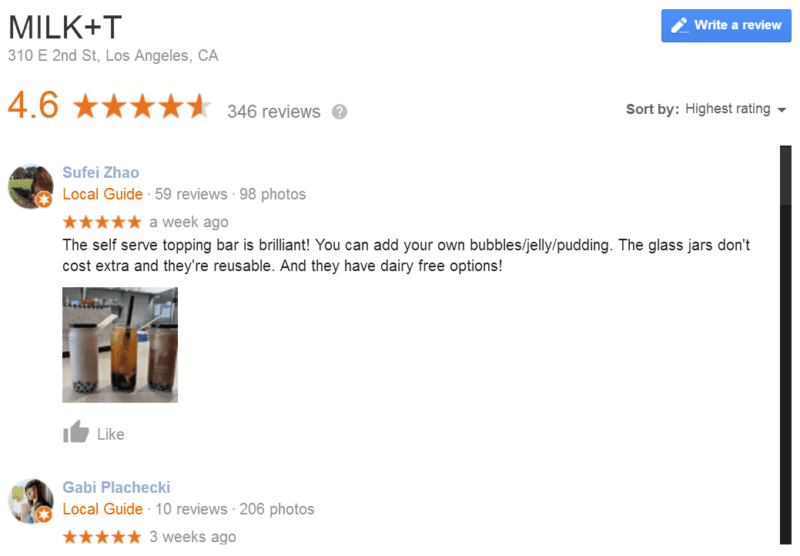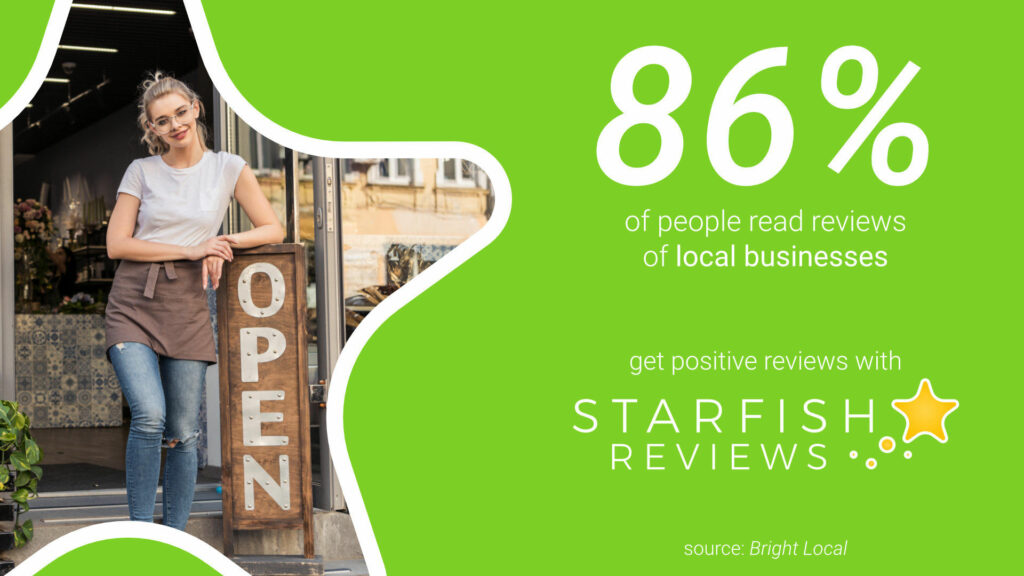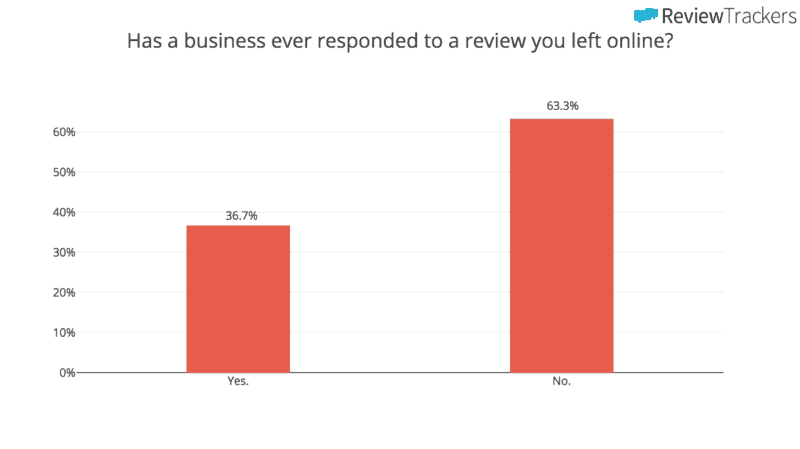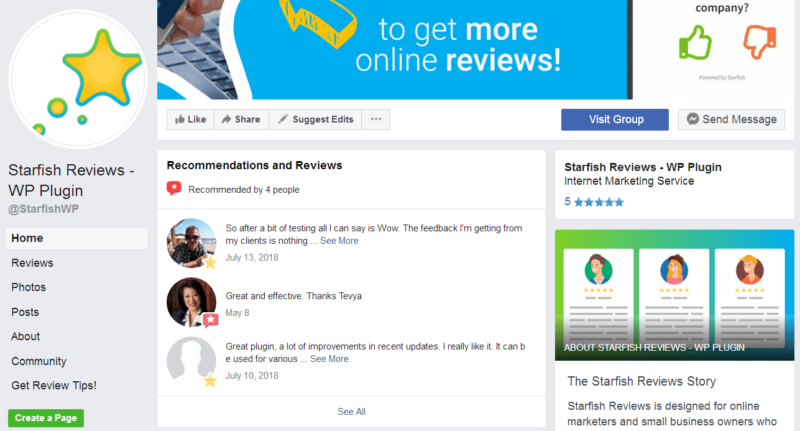You and I both know the importance online reviews play in marketing, especially for local businesses. In fact, depending on the size of your company, your support or marketing staff probably spends a decent amount of time managing negative reviews. You may even have a team member whose one and only task is to manage these types of responses.
What you may be underestimating is the importance of positive reviews. Because they don’t generate a lot of buzz on social media or the press and don’t threaten your reputation, it can be easy to simply soak up the praise and move on to the next review.
In this post, we’re going to examine the importance of responding to positive reviews. We’ll even include a few stats to support our points. We’ll then go over the nine-step process we recommend using when responding to positive reviews.
We’ll wrap up with a few recommendations we have as to which review platforms you should focus on as well as how to obtain more positive reviews.
Why You Should Pay Attention to Positive Reviews

We could fill this entire post with reasons why you should pay attention to positive reviews. However, we’ll narrow it down to three of the most important:
Increase Local Search Rankings
You already know that having a large amount of high-quality, positive reviews is one of the most effective ways to increase your appearance in local search. However, Google has a few guidelines businesses should follow to increase their rankings. One of them is managing and responding to reviews. Specifically, Google says:
“Interact with customers by responding to reviews that they leave about your business. Responding to reviews shows that you value your customers and the feedback that they leave about your business. High-quality, positive reviews from your customers will improve your business’s visibility and increase the likelihood that a potential customer will visit your location.”
Attract New Customers

The last sentence in that quote leads us to our next point. According to BrightLocal’s Local Consumer Review Survey of 2018, 86% of consumers read reviews for local businesses and 89% of consumers read business’ responses to reviews. Responding to positive reviews along with paying special attention to negative ones gives you plenty of opportunities to woo potential customers.
Retain Current Clients
Attracting new customers costs five times more than retaining existing ones. The number changes depending on which study you look at, but the result is always clear. Existing customers are valuable and cost less to market to. Responding to positive reviews is a simple way to encourage existing customers, especially newer ones, to buy again.
What Does the Data Say About Positive Reviews?

ReviewTrackers publishes an Online Review Survey every year. The 2018 edition included a few interesting stats that support our stance on responding to positive reviews.
63.3% of consumers reported never hearing back from businesses after leaving a review. Since most businesses prefer to focus on negative reviews, this gives you an opportunity to gain an edge over your competition. By responding to negative and positive reviews, you can form a relationship with your customer base and grow a loyal following your competition would kill to have.
This is proven even further with this next stat. 80% of consumers believe that a business cares about them when they receive a response, especially if it’s from management.
Lastly, reviews as a whole are becoming more positive. Since 2010, the average review has become 12% more positive. While negative reviews certainly aren’t going anywhere, if this trend continues, you may find yourself being left behind by not making more of an effort to respond to positive reviews.
How to Respond to Positive Reviews
Here’s the nine-step process we recommend using to respond to positive reviews:
- Step 1: Seek out your most engaged customers.
- Step 2: Personalize your reply.
- Step 3: Thank them.
- Step 4: Include details about their experience.
- Step 5: Provide exclusive information.
- Step 6: Address concerns.
- Step 7: Market related offers and promotions.
- Step 8: Include a light call to action.
- Step 9: Conclude with a friendly send-off.
Let’s start with step one.
Step 1: Seek Out Your Most Engaged Customers
Responding to reviews can eat up a lot of your support staff’s time depending on how many you receive. If you’re overwhelmed, focus on your most active customers.
It’s not hard to spot them on review sites. Look through your 4 and 5-star reviews. Pay special attention to reviews that are long, detailed and insightful. A customer that leaves this type of response is clearly a fan.
In order to truly let your customer know you care and aren’t simply delivering canned responses in bulk, it’s important for you to send a unique response to each one.
Step 2: Personalize Your Reply
Begin your reply by personalizing it in an incredibly simple way—greeting your customer by name. You can use any greeting that suits your brand and audience if “hi” and “hello” feel too bland for you.
Just make sure you use the right name and correct spelling.
Example:
“Hi, Phil!”
Step 3: Thank Them
Next, thank them in two ways. One for leaving a review, and one for leaving a positive review. Take the “unique” approach up a notch by mentioning the location they visited, if applicable. Be sure to respond in first person as well.
Example:
“Thank you for your response and kind words. I’m glad you enjoyed your experience at our downtown location and appreciate you taking the time to leave a review.”
Step 4: Include Details About Their Experience
To continue the “unique” approach, include specific details the customer has left about their experience. Consider SEO in your own response. If there are relevant keywords, add them to your response to help increase your search ranking on Google.
Example:
“It looks like you enjoyed our Sicilian pizza best. You take great shots on Instagram. Our handmade dough and pizza toppings never looked so good!”
Step 5: Provide Exclusive Information
If the customer mentioned something in the review or on social media, see if you can connect it with a backstory or insider factoid. Does the dish use a recipe that has a meaningful backstory? Did one of your employees learn a particular method they used in an interesting way? Is there an insider joke you can share?
Example:
“The recipe for that dish actually originates from Italy. Melanie, one of our chefs, picked it up while studying there. She’s modified it quite a bit over the years to truly make it her own.”
Step 6: Address Concerns
Some customers will leave negative feedback or suggestions in positive reviews. Similar to the way you respond to negative reviews, be sure to address these concerns in your response. This lets customers know you’re listening to them. Record these concerns as well so you can incorporate them in your products, services, and marketing strategies.
Example:
“I’m sorry you felt underwhelmed by the variety of appetizers we offer. We strive to offer the best in the area. I’ll talk to management about adding more variety to our appetizer menu.”
Step 7: Market Related Offers and Promotions
If you’re currently offering a discount or promotion you feel is relevant to the customer’s experience, be sure to include it. This is a gentle way to encourage them to come back.
Example:
“We’re actually launching a pizza punch card soon. You can receive a free, 2-topping pizza of any kind after every 9th pizza you purchase in our restaurants.”
Step 8: Include a Light Call to Action
Include a light call to action, especially if you have no promotion to offer. This should encourage the customer to buy again or at least stay up to date with your business. You can either encourage them to return directly or have them follow you on social media or equivalent.
Example:
“We also have an app you can use to view our menu, place orders and earn rewards. You can even order from us anytime through GrubHub.”
Step 9: Conclude with a Friendly Send-Off
Don’t simply end with your promotion or call to action. Thank the customer again, and add a friendly closing statement. Be sure staff members sign their responses.
Example:
“Thanks again, Phil! Hopefully I’ll see you around the restaurant sometime.
– Matt”
Putting It All Together
Here’s what our example looks like when we combine these steps:
“Hi, Phil!
Thank you for your response and kind words. I’m glad you enjoyed your experience at our downtown location and appreciate you taking the time to leave a review.
It looks like you enjoyed our Sicilian pizza best. You take great shots on Instagram. Our handmade dough and pizza toppings never looked so good!
The recipe for that dish actually originates from Italy. Melanie, one of our chefs, picked it up while studying there. She’s modified it quite a bit over the years to truly make it her own.
I’m sorry you felt underwhelmed by the variety of appetizers we offer. We strive to offer the best in the area. I’ll talk to management about adding more variety to our appetizer menu.
We’re actually launching a pizza punch card soon. You can receive a free, 2-topping pizza of any kind after every 9th pizza you purchase in our restaurants.
We also have an app you can use to view our menu, place orders and earn rewards. You can even order from us anytime through GrubHub.
Thanks again, Phil! Hopefully I’ll see you around the restaurant sometime.
– Matt”
Which Review Platforms Should You Focus On?

When it comes down to it, the most important review platforms you should focus on are the ones your customers are using most. Your time is limited, not to mention valuable. That goes for your staff as well. You may not have enough time to pay special attention to under-performing platforms.
If you’d like a more specific recommendation, that same ReviewTrackers survey pinpointed two main platforms that grow consistently with each passing year. They are Google and Facebook. In fact, Google Reviews dominated the industry in 2017. Unfortunately, popularity among platforms like Yelp and TripAdvisor is declining.
You should also consider platforms made specifically for your industry or niche. A few examples include Zomato and OpenTable for restaurants and Edmunds for car dealers. You should also consider taking a closer look at social media posts. Twitter and Facebook are notorious for being consumers’ go-to platforms for leaving negative responses.
When it comes to positive reviews, check out our guide on how to share your reviews on social media if you’d like to harness the power of social proof to attract more customers.
How Do You Obtain More Positive Reviews?
Not all customers are going to leave feedback on their experiences with businesses. You need a way to encourage them to leave more reviews. Fortunately, Starfish Reviews can help you out.
Our plugin lets you set up campaigns you can use to encourage customers who have positive feedback to leave a review. If they report a negative experience, they’ll be encouraged to submit their feedback directly to you to resolve the issue. You can check out Starfish Reviews by clicking Learn More below.
Now that you know how important it is to respond to positive reviews and have an effective strategy in place for doing so, it’s time to review your reviews and start responding! If you have any questions or relevant tips and tricks, let us know in the comments. And make sure to check out our guide on how to respond to negative reviews.





thank you for the article